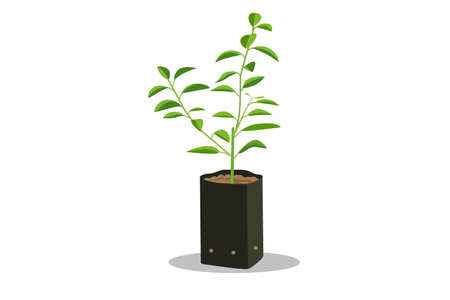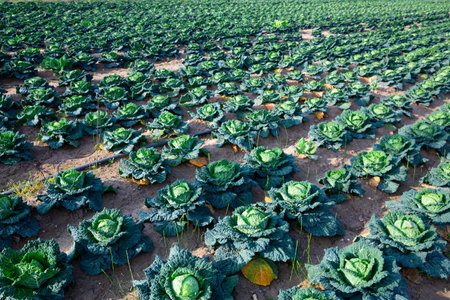Understanding Your Allotment Space
Before you start planning your planting schemes or dreaming of bumper harvests, it’s vital to really get to know your urban allotment. Every plot, especially in the patchwork landscape of British cities, has its own quirks and characteristics. First, take time to assess your soil quality: is it heavy with London clay, light and sandy, or somewhere in between? A simple soil test kit from your local garden centre can help you determine pH levels and nutrient content, which is crucial for healthy plant growth. Next, observe how sunlight moves across your plot throughout the day—urban plots are often shaded by neighbouring buildings, fences, or even mature trees. Note which areas receive full sun, partial shade, or are almost always in shadow; this will inform what crops you can realistically grow where. Don’t overlook microclimates either: a south-facing wall may create a warm pocket perfect for tomatoes or courgettes, while a wind-exposed corner could be better suited to hardy brassicas. When dealing with odd-shaped or awkward corners—a common feature on UK allotments—consider installing raised beds or using containers to make use of every inch. Even shaded areas needn’t go to waste: think about growing shade-tolerant crops like chard, spinach, or salad leaves. Remember, making the most of your space starts with understanding it intimately—a lesson learned through both careful observation and a bit of good old-fashioned trial and error.
Choosing High-yield Crops for Small Spaces
When you’re working with a modest urban plot, making every square foot count is key. Selecting the right crops can mean the difference between a sparse harvest and a basket brimming with produce week after week. For those of us gardening in Britain’s often unpredictable weather, it’s wise to lean into compact, productive vegetables and heritage varieties that have stood the test of time. Here are some top recommendations and tips drawn from years of allotment experience.
Compact and Prolific Choices
Some vegetables naturally lend themselves to smaller spaces, producing a high yield without sprawling all over your precious beds. Dwarf varieties, bush types, and quick-growing salad crops are especially handy. Here’s a helpful table to guide your selection:
| Crop | Recommended Variety | Why It Works Well |
|---|---|---|
| Dwarf French Beans | Safari, Compass | Upright habit, high yields, minimal space needed |
| Salad Leaves | Salad Bowl, Rocket | Cut-and-come-again, quick turnaround, thrives in British cool spells |
| Radishes | French Breakfast, Cherry Belle | Matures in 4 weeks, fits between slower crops |
| Spring Onions | White Lisbon | Slender growth, ideal for interplanting |
| Mangetout Peas | Oregon Sugar Pod, Carouby de Maussane | Climbing but narrow footprint; heritage types loved in Britain |
| Courgettes (Bush) | Defender, Eight Ball | Bush form stays compact yet yields prolifically in UK summers |
| Heritage Tomatoes (Bush) | Red Alert, Balconi Red | Suited to containers or growbags on patios or balconies |
| Kale (Dwarf) | Dwarf Green Curled | Tolerates poor summers; grows densely and provides multiple pickings |
The Case for Heritage Varieties
If you’ve ever chatted to old hands at the allotment gates, you’ll know there’s wisdom in choosing heritage cultivars – those tried-and-tested varieties passed down through generations. Not only do they offer flavours well-loved by British palates, but many are also bred for resilience against our variable climate. For instance, ‘Crimson Flowered’ broad beans bring both beauty and productivity to a small patch, while old favourites like ‘Chelsea Prize’ cucumbers thrive even when the summer’s been less than kind.
Practical Tips from Seasoned Growers
- Sow little and often: This keeps salads and roots coming steadily rather than all at once.
- Mix leaf shapes and colours: A blend of lettuce types not only looks good but deters pests.
- Piggyback crops: Plant radishes alongside carrots; radishes mature quickly and make room for slower growers.
Final Thoughts from a Fellow Allotmenteer
The best advice I can give is to experiment each season – what works wonders one year may need tweaking the next due to changes in weather or local conditions. Swap seeds with neighbours, listen to their tales of triumphs (and disasters), and always keep an eye out for new compact varieties suited to our unique British conditions. With thoughtful crop choices, even the smallest plot can feed your household beautifully.

3. Vertical and Container Growing
When you’re working with a modest urban allotment, thinking upwards and outwards rather than just along the ground is essential. British city plots are often boxed in by fences or walls, but these boundaries can be transformed into productive growing spaces with a bit of imagination and know-how.
Trellises: Making the Most of Vertical Space
A sturdy trellis is a time-honoured favourite for those looking to train climbing beans, peas, or even compact varieties of cucumbers and squash. Bamboo canes lashed together with twine are an affordable classic, while recycled materials like old bed frames or wire mesh panels give new life to forgotten items. Position your trellises at the north end of your plot if possible; this way, tall crops won’t cast too much shade on their shorter neighbours.
Hanging Baskets: Bringing in Colour and Crops
Don’t overlook hanging baskets—traditionally used for trailing flowers—as practical vessels for compact edibles like cherry tomatoes, strawberries, or tumbling herbs. Suspend them from fences, shed eaves, or even balcony railings. Watering can be more demanding, so line baskets with a moisture-retaining material such as wool or coir to help keep roots happy during drier spells.
Containers: Versatility at Its Best
From potato sacks to wooden crates and even repurposed buckets, containers offer flexibility and mobility. Place pots wherever there’s a scrap of sunlight—along paths, atop low walls, or grouped on patios. Choose dwarf varieties when possible, and don’t be afraid to pack plants closely; regular feeding and watering will keep them thriving. Rotate your container crops each season to prevent pest build-up and tired soil.
By combining these vertical and container techniques, even the smallest city plot can yield an impressive harvest. The secret is using every inch wisely—a lesson passed down through generations of thrifty allotmenteers across Britain’s towns and cities.
4. Succession and Interplanting Strategies
One of the secrets that seasoned allotmenteers in the UK swear by is careful planning for succession and interplanting. This approach ensures your small plot remains productive throughout the growing season, rather than leaving bare soil between crops or experiencing a glut followed by a lull. By mastering these techniques, you can enjoy a continuous harvest and make the most out of every inch of your urban allotment.
Successional Sowing: Keep Crops Coming
The British climate can be unpredictable, but with successional sowing, you spread out your planting dates to ensure a steady supply. For example, instead of sowing all your lettuces at once, stagger plantings every fortnight. This simple habit prevents waste and keeps your kitchen stocked with fresh produce over many weeks.
Example Successional Sowing Plan
| Crop | First Sow | Second Sow | Third Sow |
|---|---|---|---|
| Lettuce | Early March | Late March | Mid-April |
| Radish | Late March | Mid-April | Early May |
| Carrots (early) | Early April | Late April | Mid-May |
Interplanting: Pairing for Mutual Benefit
This age-old technique involves growing two or more crops in close proximity so they support one another. In traditional English allotments, classic pairings like carrots and onions are favoured—not only do they maximise space, but onions also help deter carrot root fly.
Popular Interplanting Combinations for UK Plots:
| Main Crop | Companion Crop | Benefit |
|---|---|---|
| Carrots | Onions/Spring Onions | Pest deterrent and efficient use of rows |
| Cabbage Family (Brassicas) | Dill/Nasturtiums | Pest distraction and improved pollination |
| Lettuce/Spinach (quick growers) | Sugar Snap Peas (tall climbers) | Lettuce shades roots, peas fix nitrogen in soil |
| Tomatoes (in greenhouse or sheltered spot) | Basil/Marigold (Tagetes) | Basil enhances flavour; marigold repels pests |
A Bit of Old-School Wisdom from the Allotment Paths
If you’re new to this, remember: it’s not about cramming as many plants as possible into a bed. It’s about understanding which crops play nicely together and how their growth habits interact. Take note from the old hands at your site—many have spent decades refining their pairings through trial and error under British skies. With thoughtful successional sowing and clever interplanting, your small plot will keep giving, right up until the first frosts.
5. Soil Health and Composting in Small Spaces
For any urban allotmenteer, the backbone of a thriving small plot is healthy, fertile soil. When youre working intensively on a compact patch, your beds can quickly become depleted if you dont give back as much as you take. Let’s face it: good soil doesnt just happen; it’s made through mindful stewardship and some classic, time-honoured know-how.
Understanding Your Soil’s Needs
Small spaces are often worked more intensively than larger plots, meaning nutrients get used up faster. A regular top-up with organic matter is essential to keep your plants happy and productive. Whether your soil is heavy clay or light and sandy, adding compost improves structure, drainage, and nutrient content—a must for city gardeners who want reliable yields year after year.
Composting in Tight Quarters
Don’t let limited space put you off composting. Even a modest bin or a tidy pile tucked into a corner can transform kitchen scraps and garden trimmings into rich, dark compost. For the truly space-conscious, consider a wormery (vermicompost) or bokashi bins; these break down food waste rapidly and can be kept discreetly on balconies or patios. Be sure to balance your “greens” (like veg peelings) with “browns” (cardboard, dry leaves) to keep things sweet-smelling and effective.
Organic Amendments for Urban Plots
Urban gardeners often have limited access to traditional manures, so turning to locally-available organic amendments makes sense. Well-rotted leaf mould is a superb soil conditioner—collect autumn leaves from local parks if allowed. Seaweed meal (if you’re near the coast), spent mushroom compost, or even coffee grounds from your local café can all enrich your beds without chemicals. Rotate these inputs to create a diverse soil ecosystem that supports robust plant growth.
Mulching: The Quiet Workhorse
A thick mulch of compost, leaf mould, or straw helps lock in moisture (vital in raised beds that dry out fast), keeps weeds at bay, and slowly feeds the soil as it breaks down. Mulching is an old gardener’s trick that pays dividends in both yield and ease of maintenance—give it a go if you haven’t already.
Conclusion: Feed the Soil to Feed Yourself
In city plots where every square foot counts, maintaining soil health isn’t just about this season’s harvest—it’s an investment for years to come. With thoughtful composting and regular organic amendments, you’ll build up a living larder beneath your feet that rewards you with bumper crops and fewer pest problems. Remember what old hands say: look after your soil, and it’ll look after you.
6. Watering Wisely on the Plot
In the UK, where hosepipe bans and growing concerns over water conservation are becoming more common, urban allotmenteers must be particularly savvy about how they water their small plots. Every drop counts, especially in the height of summer when rainfall can be unpredictable and water is at a premium. A wise old hand once said, “Don’t wait until your plants are gasping for a drink—plan ahead and make every drop do its work.”
Water-saving Techniques
The first golden rule is to water early in the morning or late in the evening. This reduces evaporation and ensures your plants get the most benefit from each watering session. Target the roots directly rather than sprinkling leaves—overhead watering wastes water and can encourage fungal diseases. It’s a good habit to use a watering can instead of a hose; it forces you to be intentional and mindful about where the water goes.
Effective Mulching
Mulching is an age-old technique that remains one of the best ways to lock in moisture. After watering, apply a generous layer of organic mulch—such as well-rotted manure, straw, grass clippings, or even shredded newspaper—around your plants. Not only does this keep the soil moist for longer, but it also suppresses weeds and adds nutrients back into the earth as it breaks down. In smaller urban plots, mulching can make a surprising difference to both plant health and your workload.
Making Use of Water Butts
Given our often unpredictable British weather, collecting rainwater is not just sensible—it’s essential. Installing a water butt beneath your shed or greenhouse guttering allows you to capture precious rainfall for later use. During hosepipe bans, having a reserve of rainwater means your plot won’t suffer while you comply with restrictions. Remember to keep lids tight to prevent mosquitoes breeding and check regularly for leaks.
A Culture of Conservation
Embracing these techniques isn’t just about following rules; it’s about fostering respect for our natural resources and setting an example for younger generations on the plot. As someone who has seen many dry summers come and go, I can assure you that thoughtful watering habits will reward you with healthier crops and a clear conscience. With care and ingenuity, even the smallest urban allotment can thrive while treading lightly on our environment.
7. Getting Involved in the Allotment Community
If there’s one thing I’ve learnt over my years tending a modest patch in the heart of the city, it’s that an allotment is far more than a plot of soil – it’s a thriving social hub. While many newcomers arrive with dreams of bumper harvests and self-sufficiency, they soon discover that the real richness lies in the community spirit. British allotmenteering is steeped in tradition, camaraderie, and collective wisdom.
The Power of Shared Knowledge
One of the greatest advantages of joining an allotment site is access to a wealth of experience. Veteran plot holders, often with decades under their belts, are usually more than willing to offer advice on everything from double-digging methods to which courgette varieties withstand a soggy summer. Don’t hesitate to strike up conversations or ask for tips – most folks are chuffed to bits to pass on what they know. I remember when Mrs Jenkins showed me how to make comfrey feed; her tried-and-tested method still outshines anything I’ve read online.
Resource Sharing and Swapping
Given limited space and resources, sharing becomes second nature among urban allotmenteers. Seed swaps are a regular fixture, allowing everyone to try new varieties without buying full packets. Tools, wheelbarrows, or even netting are often loaned between neighbours – just be sure to return things in good nick! This culture of sharing not only keeps costs down but helps reduce waste and fosters goodwill across the site.
Learning Beyond the Plot
Community events such as open days, potato competitions, or communal work parties bring everyone together and are brilliant opportunities for both learning and socialising. You’ll pick up local tricks – like how best to fend off persistent pigeons or deal with bindweed – that rarely make it into gardening books. Plus, you might find yourself invited for a cuppa or handed a surplus marrow at just the right moment.
In short, maximising your small urban plot isn’t just about clever growing techniques; it’s also about embracing the supportive network around you. Get involved in your allotment community, learn from seasoned hands, share your own experiences as you gain them, and you’ll soon find your little patch yielding more than just vegetables – it’ll bring lasting friendships and a sense of belonging as well.


